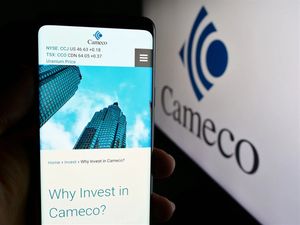Over the last few years, the radical shift in how we work has also changed expectations between employers and employees. However, Care.com’s 2024 Future of Benefits Report, released today, reveals that there is common ground to be found in this battle: care benefits. From productivity, to workplace dynamics, to generational harmony, the research clearly shows that care benefits enable both sides to get what they want.
Employers invest in benefits that drive productivity and help recruit and retain talent, and the majority of employer respondents report that child care and senior care benefits deliver on those goals. For employees, care support is essential to perform one’s job and employee respondents across generations report they have caregiving responsibilities. As a result, 56% of the employer respondents are prioritizing child care benefits in 2024 (up 10% since 2023), and 50% are focusing on senior care benefits (up 7% since 2023). Equally compelling are the findings that care support is one thing all four generations in the workforce agree upon and one benefit that fosters successful work places whether in office, hybrid or fully remote.
“Our research makes one thing clear: when care support exists, workers and workplaces are more productive,” said Brad Wilson, CEO of Care.com. “Care benefits are the common ground across generations and work locations, and an example of something that serves employers and employees in equal measure.”
Highlights from the 2024 Future of Benefits Report, which surveyed 620 C-suite level executives and HR decision-makers and 1,000 benefits-eligible employees, include:
Caregiving is the Common Language Across Generations: Employee respondents across all four generations in the workforce (Gen Z, Millennials, Gen X, and Boomers) reported they have caregiving responsibilities for either children, grandchildren, pets, or seniors, and 1 in 5 (20%) said they have previously left a job because their employer lacked family care benefits. And the demand for benefits defied generational stereotypes. The percentage of employee respondents caring for seniors was nearly uniform across generations and 21% of employee respondents said that they’d switch jobs in order to obtain senior care benefits.
Employee Benefits Ease the Financial Burden of Caregiving: The soaring cost of care has employees looking for financially-related care benefits through work and this is an area where employers can deliver meaningful impact. Among family care benefits they would want to receive if they could only have one, employee respondents chose those that would mitigate the cost of care – Dependent Care Flexible Spending Accounts (FSAs) and cash subsidies for care, which ranked first and second, respectively. These same benefits also ranked among the top four family care benefits among employers.
Additionally, 30% of employee respondents ranked cash subsidies for care as the #1 family care benefit they do not currently have but would definitely use if available. For employees who have access to child care or senior care benefits, respondents revealed major savings, reporting an average annual out-of-pocket savings of $2,727 for child care and $2,909 for senior care.
Successful Work Arrangements, including Return-to-Office (RTO), Rely on Family Care Benefits: As more employers ask workers to return to offices and worksites – as 89% of employers surveyed indicated they are – the majority striving for a return to office are providing benefits to support the transition. Child care and senior care benefits rank in the top three for employer respondents (55% and 47%, respectively) which correlates to worker needs. Nearly half (48%) of employee respondents reported that child care benefits were highly critical for them in order to return to office successfully, with 43% responding similarly for senior care benefits.
Family Care Benefits Meet Employers’ Business Objectives and Workers’ Needs:
The majority of HR leader respondents agree that care benefits help meet their objectives, reporting that both child care benefits and senior care benefits have a positive impact on employee productivity (82% and 78%, respectively). In fact, employers ranked child care and senior care benefits among the top benefits they are prioritizing in 2024, with 56% prioritizing child care benefits (up from 46% in 2023), and 50% prioritizing senior care benefits (up from 43% in 2023).
The full results of The 2024 Future of Benefits Report can be found here.
2024 Future of Benefits Report Methodology
The Future of Benefits Report surveyed two samples. The sample of 620 U.S. adults was surveyed from November 11 to December 10, 2023. Sampling was calibrated to ensure a representative sample from each of ten industries. All respondents are C-Suite level executives, HR Managers or higher ranking staff at a company of 100 or more employees, and are at least partially responsible for company decisions regarding employee benefits, confirmed by both consumer-matched data and self-confirmation. Five industries are represented by 75 respondents: (1) technology, (2) finance, insurance, (3) retail, (4) healthcare, (5) manufacturing, construction. Four industries are represented by 50 respondents: (1) food, hospitality, (2) education, (3) transportation, supply chain, warehousing, (4) government, non-profit work. One industry is represented by 45 respondents: the legal sector.
The sample of 1,000 U.S. adults was surveyed from November 11 to 15, 2023. Sampling was calibrated to ensure an equal sample of 100 responses from each of ten industries: (1) technology, (2) finance, insurance, (3) retail, (4) healthcare, (5) manufacturing, construction, (6) food, hospitality, (7) education, (8) transportation, supply chain, warehousing, (9) government, non-profit work, (10) the legal sector. All respondents are currently employed for wages and eligible for employer-provided benefits, confirmed by both consumer-matched data and self-confirmation.
DKC Analytics conducted and analyzed these surveys with a sample procured using the Pollfish survey delivery platform, which delivers online surveys globally through mobile apps and the mobile web along with the desktop web. Response completion rate was 65%, and only fully completed responses were considered valid. No post-stratification has been applied to the results.
About Care.com
Available in 21 countries, Care.com is the largest online platform for finding and managing family care, spanning in-home and in-center care solutions. Since 2007, families have relied on Care.com for an array of care for children, seniors, pets, and the home. Designed to meet the evolving needs of today’s families and caregivers, the Company also offers customized corporate benefits packages to support working families at more than 700 global clients, household tax and payroll services, and innovations for caregivers to find and book jobs. Care.com is an IAC company (NASDAQ: IAC).
View source version on businesswire.com: https://www.businesswire.com/news/home/20240305226580/en/
Contacts
Media Contact:
Jamie Gentges
Public Relations Associate, Care.com
jamie.gentges@care.com
Mackenzie Nintzel
Public Relations Associate, Care.com
mackenzie.nintzel@care.com






